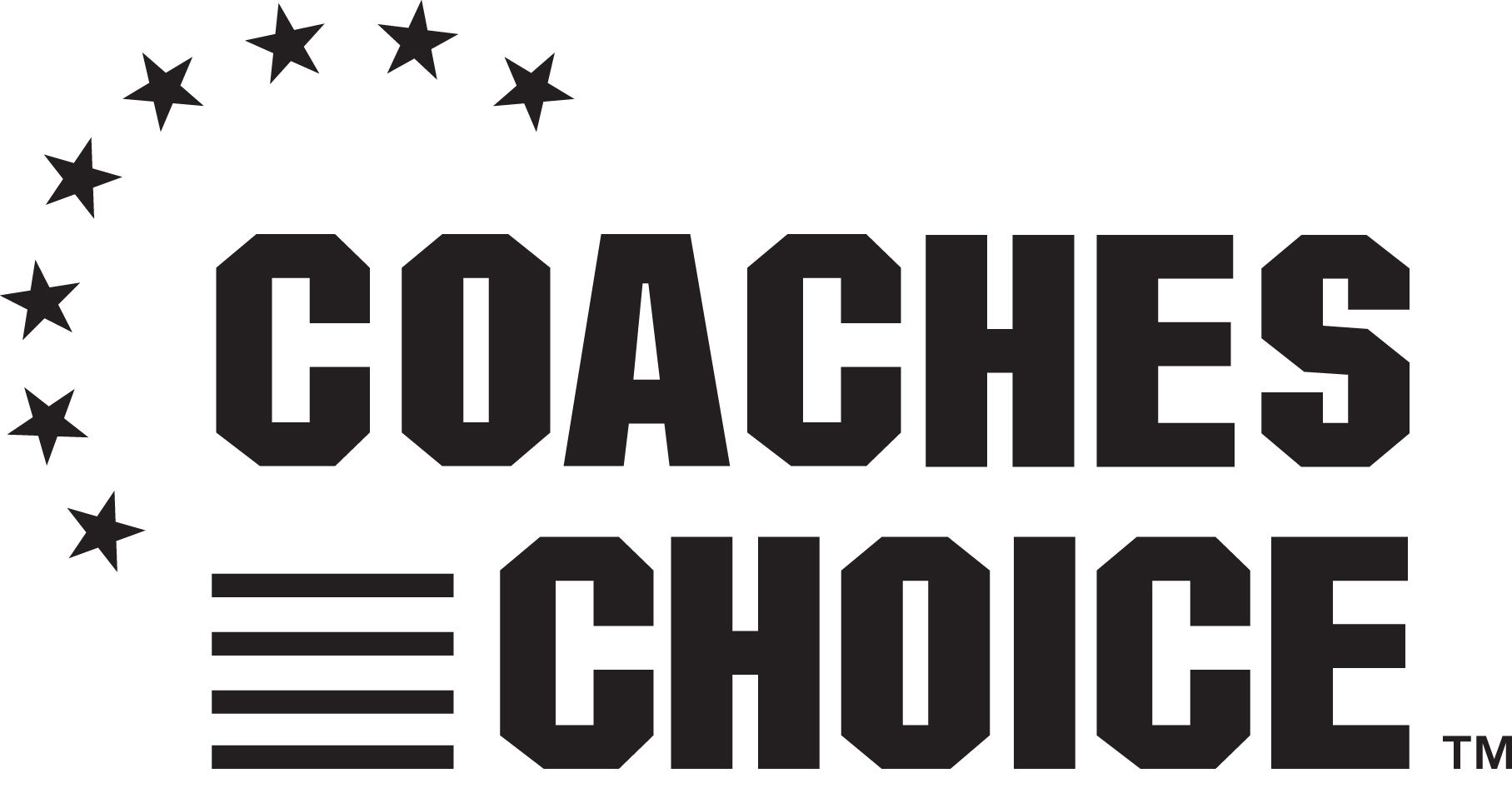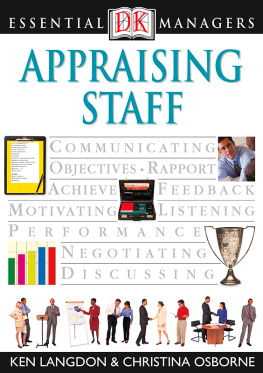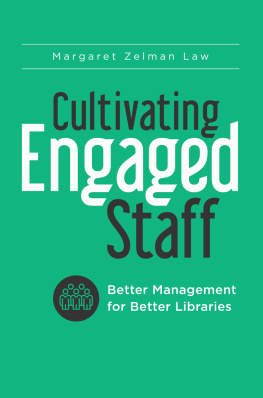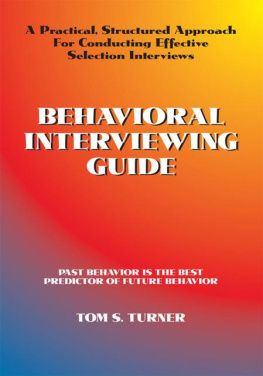
Bob Ditter

2013 Healthy Learning. All rights reserved. Printed in the United States.
The figures in this book may be photocopied or scanned for use with your staff. For additional uses, please contact Healthy Learning. No other parts of this book may be reproduced, stored in a retrieval system, or transmitted, in any form or by any means, electronic, mechanical, photocopying, recording, or otherwise, without the prior permission of Healthy Learning. Throughout this book, the masculine shall be deemed to include the feminine and vice versa.
ISBN: 978-1-60679-261-2
Library of Congress Control Number: 2013931372
Cover design: Cheery Sugabo
Book layout: Studio J Art & Design
Front cover photo: Stockbyte
Healthy Learning
P.O. Box 1828
Monterey, CA 93942
www.healthylearning.com
Introduction
Introduction
Cape Cod, Massachusetts
Spring 1974
Many years ago, far, far away in another space and time in my life, I found an ad in a local Cape Cod newspaper for a woodshop and cabin counselor at a boys sailing camp. I had been working as a teachers aid in an outdoor education program and was looking for something to do over the summer. I decided to try it out, which meant driving out to the camp in South Orleans for what was one of the few real job interviews I had had at that point in my life. I remember meeting with the assistant director at the time, Tom Lincoln. The interview consisted of Tom walking me around the property to show me the campthe beach on Pleasant Bay where the boys launched their Beetle Cats and Day Sailors, the cabins where 8 or 10 campers lived with two counselors for four or eight weeks, and the athletic field, mess hall, and infirmary. As we walked, I could tell Tom was trying to get a feel for me. He asked me about school, my very brief time on the Union College swim team, and my previous work with kids. At the end of the 45 minutes we spent together, much of which consisted of me listening to Toms stories about his college swim team coach, he asked me to meet the director, Ced Hagenbuckle. Ced was a trim, handsome, healthy-looking man in his early 70s who looked like he spent a lot of time on boats in the sun. Tom had somehow signaled Ced that I was their man, so Ced simply shook my hand and said he would see me in mid-June when I would meet the rest of the staff. Everything centered on giving our wordmy word about my past experience and why I thought I would make a good woodshop counselor, their word that my salary was what it was, and my word that I would actually show up on the appointed day!
Somehow, it all worked. I showed up to find most of the rest of the staff, who had essentially been hired the same way I had been hired, already there. Aside from the fact that the head shop counselor got himself fired within two weeks of camp (giving me an unforeseen promotion as a result) and that the staff taught the campers how to swear like sailors, everyone had a blast and learned a lotmyself included. How things have changed!
Since then, parents have totally changed the way and the extent to which they are involved in their childrens lives. Since then, the Catholic Church and the Boy Scouts of America have revealed an extensive pattern of sexual abuse of children by certain priests and scoutmasters, respectively, that went on for at least 30 years. Since then, concerns about violence in school have escalated, beginning with the school shootings in Columbine, Colorado, in 1992, and continuing with numerous murderous melees at universities, malls, movie theatres, and schools around the country. Since then, the Internet has brought the good, bad, and ugly of the world directly into peoples homes. Since then, children, for example, look at screens on average of four to six hours a day; teenage boys play an average of 16 hours of video games a week and watch an average of 50 clips of pornography online; and 900 million profiles have been created on something called social media sites we all know as Facebook and Twitter. Since then the Twin Towers in New York were felled by international terrorists, leaving us all with the unsettling realization that we arent quite as safe as we would like to believe. Somehow, when it comes to deciding who we can trust with the care and well-being of other peoples children, giving our word doesnt seem to cut it anymoreif it ever really did.
Finding good people is a challenge for every enterprise, but for childrens summer campsor for any organization where the responsibility for other peoples children is at riskit is critical. Counselors are every camps first and foremost asset. It is the staff that creates healthy, wholesome, nurturing relationships with campers (or not); it is the staff that brings the program to life with spirit and enthusiasm (or not); and it is the staff that maintains the physical and emotional safety of everyone involved (or not). These stakes are high! You find few ventures where the owners or directors toil away for 10 months only to turn the entire enterprise over to a bunch of 18- to 22-year-olds! As I have often said, camp professionals have got to be crazy!
So my big promise is: This book and the accompanying DVD will hand you a set of highly refined skills and specific questions that will vastly improve your staff interviewing and staff selection results. Unless you have taken this training with me in the past (and even if you have), I am certain that you havent encountered a set of interviewing skills as comprehensive and scientifically based as the ones presented in this book. The questions, practices, and strategies in this book have been developed and tested and refined over the past 12 years. People who have used this method in the past have found their interviews on the one hand more demanding, and on the other hand yielding better results.
How to Use This
Book/DVD Package
How to Use This Book/DVD Package
Note: The chapters in the book do not correspond exactly with the chapters in the DVD.
Step 1: Decide which members of your staff will be doing staff interviewing, and include them in the entire learning process (reading this book, watching the DVD, practicing the techniques, discussing the process as a team).
Step 2: Have everyone who does interviewing on your team read the Introduction, Table of Contents, and the Overview in this book.
Step 3: Have everyone watch the first two chapters of the accompanying DVD.
Step 4: Get everyone on your interviewing team together (even if you do it by phone), and do the exercise described in Chapter 3 of the book.
Step 5: Read Chapters 4, 5, and 6 in the book, and then watch Chapters 3 and 4 of the DVD.
Step 6: Set up a mock interview with one of your team members, and have everyone practice the interview approach and questions. Have each person observing the mock interview score it. (Read Chapter 7 for details about scoring). Then, compare notes.
Step 7: Set up a real interview with a bona fide candidate, either via Skype, the phone, or in person, like at a college camp fair. Have your team members sit in on the call or watch the interview. As you did in Step 6, have each person observing the interview score it. Then, compare notes (not in front of the candidate!)
Step 8: Repeat Step 7 once or twice more.
Step 9: Continue to have greater success identifying better candidates!

Next page











